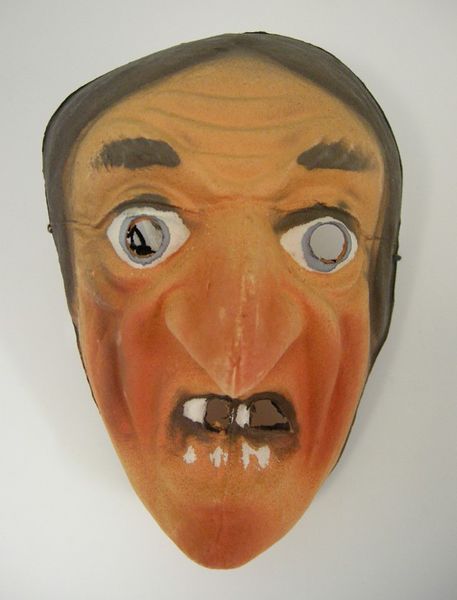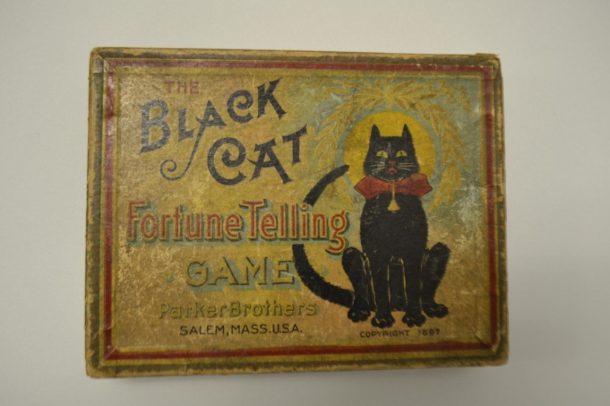When you think of Halloween, what do you think of? Trick or treating? Carving pumpkins? Dressing up? Halloween is full of fun things to do, but where did these traditions come from? Let’s have a look at some of the scariest objects in the Museum of Childhood. Buckle up, it’s going to be a spooky ride!

To trick or to treat?
Trick or treating began in the Middle Ages and was known as ‘guising’, short for disguising. This came from a Celtic tradition in which end-of-year celebrations included dressing up as evil spirits. It was believed that one day each year demons would roam the earth – and so you could hide by dressing up as one. Children would dress up in their costumes and go door-to-door asking for food or money. In exchange, children would offer songs and prayers on behalf of the dead.
For many years costumes were made by hand at home, but in the 1930s companies began to mass-produce Halloween costumes. The witch’s mask in the photograph is from the Museum of Childhood collection and was made around that time. From then on trick or treating became widely popular in North America as children began to dress as supernatural and scary beings. Today, we dress up as all kinds of things like superheroes, fairies, and even pirates!

The origins of pumpkin carving
In North America a traditional carved pumpkin is called a Jack-O’-Lantern. The name comes from the Irish folktale ‘Stingy Jack’, a story about a man who tricked the devil. When he died he was stuck between Heaven and Hell, and forced to wander the Earth with a burning coal inside a turnip. His ghostly figure was often seen and he began to be called ‘Jack of the Lantern’, which later became ‘Jack-O’-Lantern’. As time went on, people in Ireland and Scotland began to make their own lanterns out of turnips or potatoes complete with a scary face to scare away evil spirits. Irish and Scottish immigrants brought this tradition over to America but swapped turnips for the native pumpkin.
The pumpkin became a Halloween symbol throughout America and featured in cards, decorations, and movies. The emergence of the Halloween card in 1890s strongly featured the carved pumpkin and this has continued to the present day. The card in this image is from the 1980s.

Bobbing for apples
Around Halloween there once was an ancient festival honouring a goddess of fruit trees. The apple was at the centre of these celebrations, and was often said to predict the future. The first person to pluck an apple from the water-filled bucket would be the first to marry. If the bobber got the apple on the first try it meant they would experience true love, if it took many tries then the person would be fickle in romantic encounters.
Fortune-telling games became a popular staple at any Halloween party, even in Victorian times! At the Museum we have a card game called ‘The Black Cat Fortune Telling Game’ which was for all seasons but particularly recommended at Halloween. Each person draws six cards labelled The Past, The Present, The Future, Love Matters, General Advice, and Danger. On the back of each card is a fortune. Like apple bobbing this was played to reveal your future!

We hope you had a SPOOKTACULAR time learning about all the fun Halloween traditions and the Halloween objects we have here! We look forward to seeing you haunt around the Museum soon!


